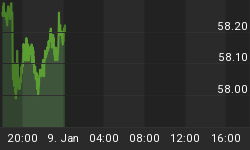As the tariff tiff continues its incessant back and forth between China and the U.S., the European Union emerges as a major importer of American soybeans, with official figures showing that the bloc saw a 283-percent increase in imports from the previous year.
According to European Commission figures, the EU’s total share of imports of U.S. soybeans is now up to 37 percent, compared to only 9 percent a year ago.
And we’re set to hear a lot more about what the EU is importing from the United States in the coming weeks and months thanks to a late July meeting between Trump and European Commission President Jean-Claude Juncker.
It’s all about figures and follow-up now.
"The European Union can import more soybeans from the U.S. and this is happening as we speak," President Juncker said Wednesday. "This is a win-win situation for European and American citizens."
EU Agricultural Commissioner Phil Hogan echoed those sentiments, saying: "The European Union and the United States have been longstanding partners and there is room to further strengthen our trade relationship. We expressed our willingness to import more soybeans from the United States and this is already happening. European and American farmers have much to gain by working together."
Last week, the Trump-Juncker meeting led to talk that a trade war with Europe had been averted, with the pair promising to “work together toward zero tariffs, zero non-tariff barriers, and zero subsidies on non-auto industrial goods”. Related: Gold Bloodbath Has Created A Buying Opportunity
They agreed to “hold off” on further tariffs and “reassess existing tariffs on steel and aluminum”, while the EU apparently agreed to start importing a lot (in vague terms) of U.S. LNG and become a “massive buyer”.
In their joint statement from July 25, they also said that they (meaning the EU) would work to increase trade in soybeans.
So, the August 1 showering of figures from the European Commission is intended to demonstrate that Europe has already been working on this.
And while the soybean numbers are impressively high, when you look at EU imports of soymeal specifically, the numbers should please Washington. In July, the EU imported 185,000 tonnes of American soymeal. That’s a 3,337-percent increase from July last year. In other figures, U.S. soymeal now accounts for 13 percent of EU soymeal imports. At the same time last year, it only account for 0.3 percent.

(Click to enlarge)

(Click to enlarge)
Source: Europa.eu
According to the EU, that’s because “U.S. prices for both soybeans and soymeal are currently the most competitive on the market and therefore a very attractive feed option for European importers and users”.
The point is that market forces are at work here—not talks and Trans-Atlantic hugs. Trump didn’t convince the EU to suddenly start buying up tons of American soybeans. It was already happening, but makes for good Tweets nonetheless. The market is responsible, and right now it likes American soybean and soymeal prices.
Related: Poll: 70% Of Investors Have No Interest In Bitcoin
But at the same time, China’s 25-percent tariffs on U.S. soy imports will have played a role, shifting Chinese intake of American soybeans out of the market and replacing it with Brazilian imports, which are now priced higher. The surge in Brazilian soybean prices as a result of Chinese tariffs has make American soybeans more attractive in the EU.
The U.S. and Brazil are the world’s two largest soybean exporters, but the trade war is wreaking havoc with pricing. In early July, thanks to Chinese tariffs, average cash prices for U.S. soybeans hit their lowest price in almost a decade, according to Bloomberg, citing the Minneapolis Grain Exchange. Brazil was the definitive beneficiary, with soybeans futures soaring and shipments to be loaded in August getting $2.21 bushel more than Chicago futures in the first week of June.
For Brazil, this is a premium bonanza that will let it corner the Chinese market, but it will end up losing market share in Europe to more attractively priced American imports.
By Fred Dunkley for Safehaven.com
More Top Reads From Safehaven.com

















